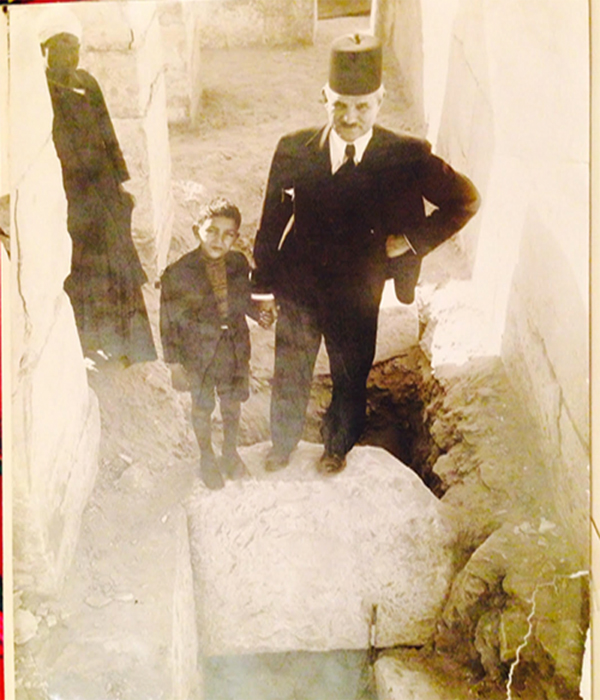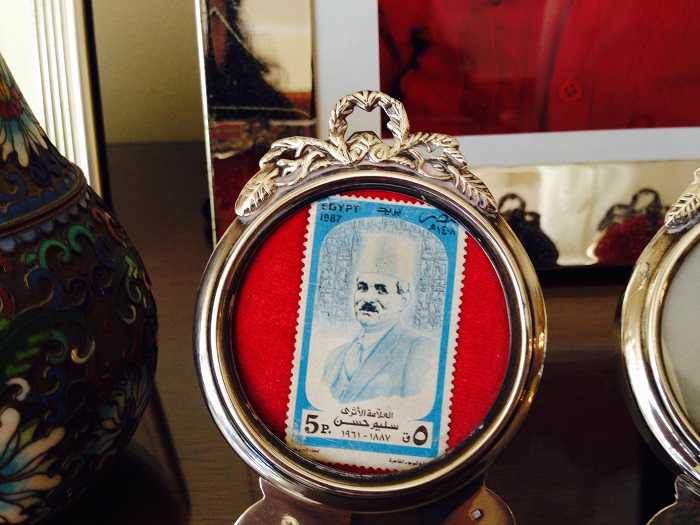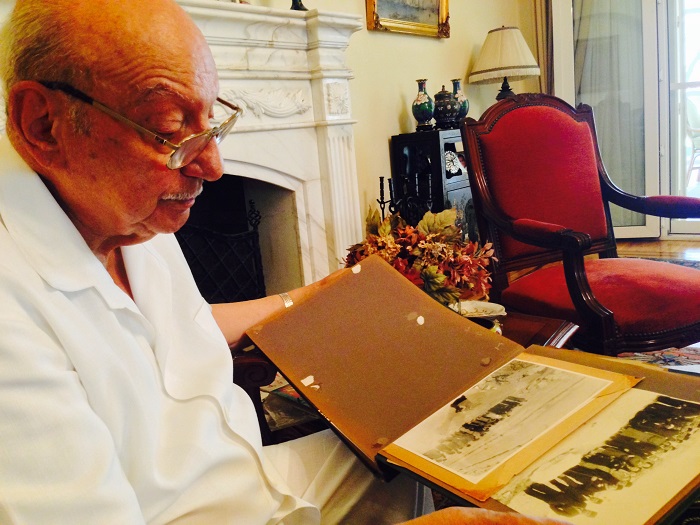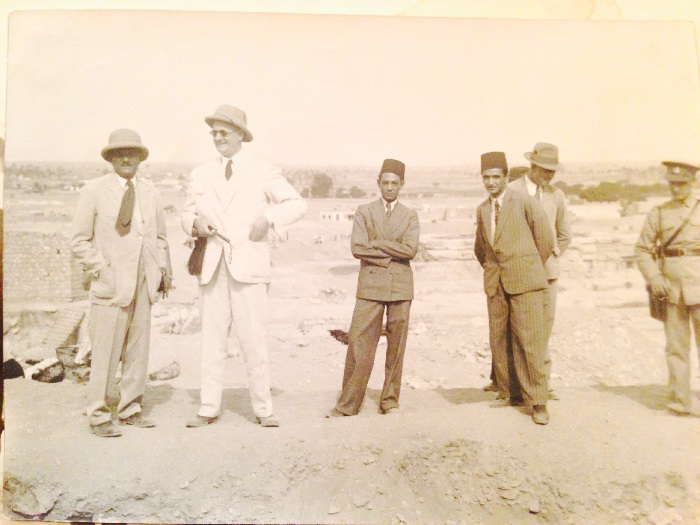http://english.ahram.org.eg/NewsContent/32/99/141622/Folk/Special-Files/Memoires-of-an-Egyptology-guru.aspx
Memoires of an Egyptology guru
Ahead of CULTNAT publishing, 30 September, the memoires of Egyptology guru Selim Hassan, Ahram Online digs into the life and achievements of the legendary archaeologist
Amira Noshokaty , Thursday 17 Sep 2015
Selim Hassan
(1887-1961) was a pioneer in Egyptologist. He had an active career in
excavations and discoveries under the Egyptian University. Not to
mention being the author of over 50 books documenting Egyptian history.
Born
in 1887, the Egyptology guru grew up in Mit Nagi village, in Mit Ghamr.
He was the son of the Sheikh El-Balad (the vice mayor) who wanted him
to study law because it was prestigious and could secure him a
government position. However, Hassan was fascinated by antiquities and
ancient Egyptian history. "When his father passed away, he followed his
passion," explained Ahmed Hassan, former Egyptian ambassador and son of
Selim Hassan.

Courtesy of Selim Hassan Family
Growing
up in an era that followed the decipherment of ancient Egyptian
Hieroglyphs by Champollion in 1822, and amid tens of archeologists that
commenced regular missions to explore ancient Egyptian treasures, Selim
Hassan developed a lifelong passion for history in general. In 1912,
Hassan graduated from the Department of Archaeological Studies, founded
by Ahmed Kamal Pasha, recounts the Centre for Documentation of Cultural
and Natural Heritage (CULTNAT), affiliated with the Bibliotheca
Alexandrina.

Photo: Amira El-Noshokaty
Egyptians
at the time were frowned upon. So Hassan started his professional life
as a history teacher in a high school. "He wrote two history books, one
of them titled Egypt During the Ottoman Reign, which was a
great success, to the extent that the government assigned it as part of
the curiculum in high school. It granted him LE5,000 in revenue that
enabled him to buy a flat in Paris and study for his Masters," remembers
Ahmed Hassan.
During
his stay, he became friends with numerous cultural figures, such as
renowned Egyptian thinker and writer Taha Hussein. Selim Hassan also
kept a keen eye on Egyptian antiquities in museums abroad, tracing them
back to their origins and documenting how they were transferred abroad.

Photo: Amira El-Noshokaty
As
Egyptology and the antiquities service were dominated and controlled by
foreign Egyptologists, Kamal Pasha struggled until he managed to
appoint two of his students at the Egyptian Museum in Tahrir Square in
1921. Selim Hassan was one of them, along with Mahmoud Hamza. Hassan
became the first Egyptian Egyptologist to begin an active career,
spanning 1929 to 1939. Now married with three children, Selim Hassan
dedicated his life to his excavations.
"I
spent my childhood by the Pyramids plateau," Ahmed Hassan told Ahram
Online. "Near the Khafraa Pyramid there was a small rest house where we
lived, next to the site of my dad's excavations. (Being his youngest
child) I used to accompany him and was very happy to be part of the
excavations. One day an English woman who worshipped the deities of
ancient Egypt asked to work with Selim Hassan. Married to an Egyptian
and a mother of a little boy, whom she called Siti, she was known to us
as Om Siti (Mother of Siti)," he added.
Om
Siti, or the later famous Dorothy Eady, became Selim Hassan's
assistant, and would live on site. " She lived by the newly discovered
tomb, which she took as shelter, never posed in any of our photos and
would feed all stray animals, including snakes," he remembered.

Courtesy of Selim Hassan Family
Selim Hassan's daily routine was quite simple. He woke at the crack of
dawn and went off to his excavation site. To name a few of his
excavations, he discovered many of the Giza mastaba tombs, cleared the
Sphinx and its temple, for the first time completely digging out the
great amphitheater around it and ensuring that it would not be buried by
sand easily.
In addition,
he wrote a study on the temple of Amenhotep II, discovered the so-called
"fourth Pyramid," or the palace-façade tomb of Queen Khentkawes of the
Fourth Dynasty, and also the funerary town of the priests associated
with it, reveals CULTNAT. He worked at Sakkara on the causeway, and the
valley temple of King Wanis, discovering 17 mastaba tombs around this
area. He was a great success.
But
success makes for a lot of enmity. As soon as Selim Hassan was promoted
deputy head of antiquities, a feud between him and the government body
surfaced, which ended with him being reassigned to an administrative
position, recalls Ahmed Hassan.
He
chose to retire altogether and focus on his writing that included over
50 books and tens of articles on Egyptology in English, French and
Arabic, among which Excavations at Giza (10 volumes) in 1929-1939; Excavations at Sakkara (Three volumes) in 1937-1938; The Encyclopaedia of Ancient Egypt History (16 volumes), completed in 20 years; Hymns religieux du Moyen Empire in 1928; Le Poeme dit de Pentaour et le Rapport Officiel sur la Bataille de Qadesh in 1929; The Sphinx: Its History in the Light of Recent Excavations in 1949; and Report on the Monument of Nubia in 1955.
"In his dedication of the Encyclopedia of Ancient Egyptian History, Selim Hassan wrote the following to Ahmed Pasha Abdel Wahab, his childhood friend, who died at an early age," noted Hassan:
"To
Ahmed Pasha Abdel Wahab, and to all those who wanted to offend me and
came between me and my work, which only brought me closer to science, to
all of the above, I dedicate my work ... "
No comments:
Post a Comment